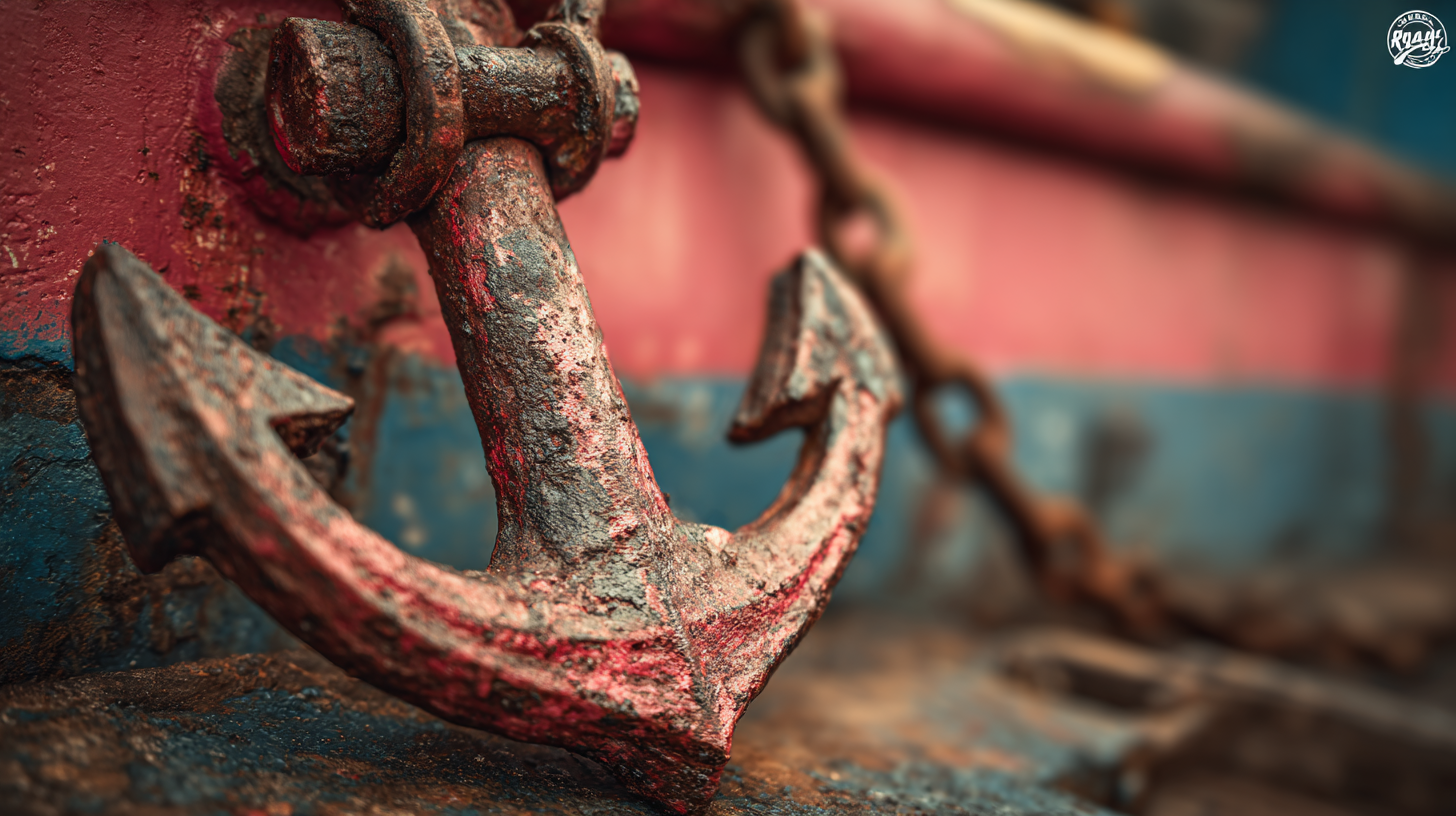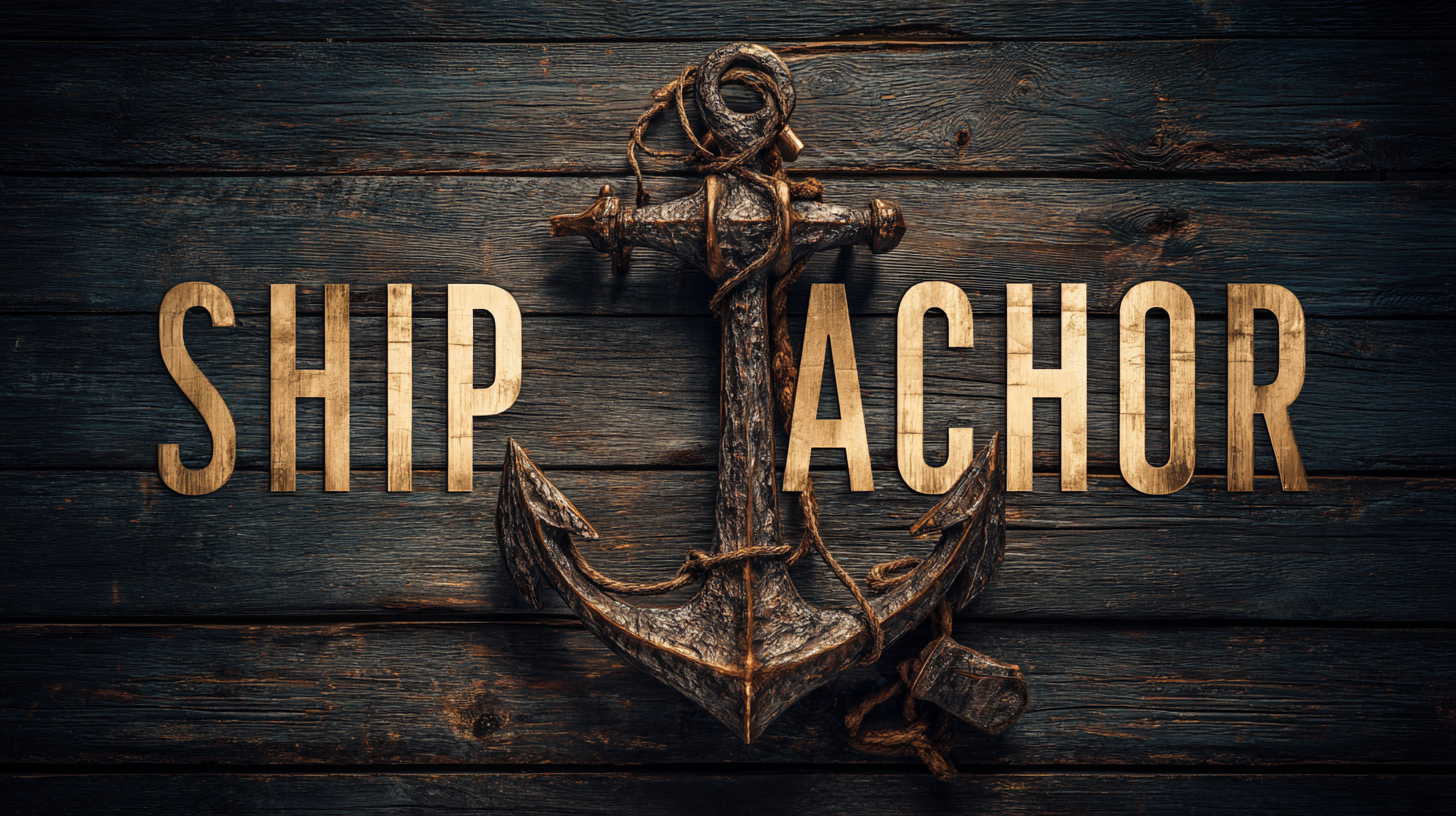
Ultimate Guide to Choosing the Best Ship Anchor for Your Maritime Needs
The selection of the right ship anchor is crucial for maritime safety and efficiency, particularly in an industry projected to reach a global market size of approximately $14 billion by 2026. As shipping activities intensify alongside the increasing demand for international trade, the significance of quality ship anchors can’t be overstated. A reliable anchor is not only essential for maintaining a vessel’s position during unfavorable weather conditions but also plays a vital role in protecting marine ecosystems by ensuring proper mooring practices. According to the International Maritime Organization, the growing emphasis on sustainability and safety in maritime operations has led to advancements in anchor technology, highlighting the importance of choosing an anchor that meets stringent quality standards.

Therefore, understanding the various types of ship anchors available and their respective benefits is key to meeting diverse maritime needs effectively.
Understanding Different Types of Ship Anchors and Their Applications
When selecting the best ship anchor for your maritime needs, understanding the different types of anchors and their specific applications is crucial. There are several primary types of ship anchors, including the drop anchor, plow anchor, and fluke anchor. Each type is designed to perform under varying conditions and seabed types, making it essential to choose the right one for your vessel and intended use. For instance, plow anchors are excellent for soft and muddy seabeds due to their ability to dig into the ground, while fluke anchors provide excellent holding power in sand and clay environments.

Additionally, it's important to consider the size and weight of the anchor in relation to your ship. A larger vessel typically requires a heavier anchor to ensure stability during harsh weather conditions. Moreover, specialized anchors, such as grapnel anchors, are used for specific situations like recovery operations or anchoring in rocky areas. By understanding these diverse options and their respective applications, mariners can make informed decisions that enhance safety and operational efficiency on the water.
Key Factors to Consider When Selecting the Right Anchor for Your Vessel
When selecting the right anchor for your vessel, several key factors will significantly influence your choice. The type of vessel, sailing conditions, and anchor design are paramount. According to a report by The Journal of Marine Engineering and Technology, different anchors, such as plow, fluke, and spiral anchors, exhibit varying holding power based on the seabed composition—be it mud, sand, or rock. For instance, plow anchors are proven to provide superior holding strength in sand but may struggle in rocky bottoms, where a grapple anchor might perform better.
Another crucial consideration is the size and weight of the anchor relative to your vessel's dimensions and weight distribution. The American Boat and Yacht Council (ABYC) recommends that the anchor's weight should be approximately 1/25th of the boat's total weight, ensuring it can withstand environmental stresses like wind and current. Furthermore, testing by the National Oceanic and Atmospheric Administration (NOAA) has found that an adequately sized anchor can improve stability and reduce the likelihood of dragging, which is especially critical during adverse weather conditions. By assessing these factors thoroughly, boaters can enhance their safety and overall maritime experience.
Ultimate Guide to Choosing the Best Ship Anchor for Your Maritime Needs - Key Factors to Consider When Selecting the Right Anchor for Your Vessel
| Anchor Type | Holding Power (lbs) | Ideal Vessel Size | Material | Weight (lbs) | Best Conditions |
|---|---|---|---|---|---|
| Plow Anchor | 1500 | 25-40 ft | Galvanized Steel | 14 | Muddy or Sandy Bottom |
| Claw Anchor | 1200 | 20-35 ft | Anodized Aluminum | 10 | Weedy or Rocky Bottom |
| Danforth Anchor | 1000 | 15-30 ft | Hot-Dipped Galvanized Steel | 8 | Sandy or Muddy Bottom |
| Fisherman Anchor | 1400 | 20-45 ft | Steel | 16 | Good for all types of bottoms |
| Mushroom Anchor | 800 | 10-25 ft | Cast Iron | 30 | Soft Muddy Bottom |
The Advantages of Choosing Chinese-Manufactured Anchors for Quality and Affordability
When it comes to maritime equipment, selecting the right ship anchor is crucial for safety and efficiency. Among the various options available, Chinese-manufactured anchors stand out for their excellent combination of quality and affordability. These anchors are produced using advanced technology and rigorous quality control processes, ensuring they meet international standards. The craftsmanship involved in their production not only secures their reliability but also enhances their durability, allowing vessels to anchor securely in a variety of marine environments.
Affordability is another significant advantage of choosing Chinese anchors. With competitive pricing structures, they offer shipowners the opportunity to obtain high-quality anchoring solutions without compromising their budgets. This financial aspect is particularly beneficial for smaller operations and those looking to expand their fleets without incurring overwhelming costs. Ultimately, opting for Chinese-manufactured anchors allows maritime operators to strike a balance between cost-effectiveness and superior performance, making them a smart choice for anyone navigating the vast waters of the shipping industry.
Comparison of Ship Anchor Types by Weight and Price
Maintenance Tips to Ensure Long-lasting Performance of Your Ship Anchor
When it comes to selecting the right ship anchor, understanding maintenance is crucial for ensuring its long-lasting performance. According to a study by the Maritime Research Institute, nearly 30% of anchor failures can be attributed to poor maintenance practices. Regular inspections should focus on wear and tear, particularly for moving parts and connections.
 Marine-grade materials are often recommended due to their corrosion resistance in harsh environments, and failing to choose the right material can significantly affect the anchor's lifespan.
Marine-grade materials are often recommended due to their corrosion resistance in harsh environments, and failing to choose the right material can significantly affect the anchor's lifespan.
Moreover, properly cleaning your anchor after each use can mitigate the effects of seawater and marine growth. The American Bureau of Shipping suggests using freshwater and a soft brush to remove salt deposits and debris. Additionally, applying a protective coating can greatly enhance durability. Regular checks for signs of rust or other forms of degradation allow for timely interventions, which, according to the Society of Naval Architects and Marine Engineers, can extend the functional life of an anchor by up to 50%. Investing in routine maintenance will not only ensure operational reliability but also reduce long-term replacement costs, making it a smart choice for any vessel owner.
Innovative Technologies in Anchor Design: What to Look For in the Future
As the maritime industry continues to evolve, the design of ship anchors is experiencing
significant innovations that enhance performance and safety.
The future of anchor technology lies in materials that offer improved strength-to-weight ratios,
allowing for more efficient handling and deployment. Lightweight composites
and high-strength steels are becoming prominent, reducing the overall weight of anchors while
maintaining their holding power. This advancement not only enables better fuel efficiency
during transportation but also simplifies the anchoring process, making it more accessible for
operators of all skill levels.
In addition to material innovations, smart technology
is poised to revolutionize anchor systems. The integration of sensors and connectivity features can
provide real-time data on anchor performance, seabed conditions, and environmental factors. Such
advancements allow mariners to make informed decisions, optimizing anchoring strategies based on
accurate assessments. Moreover, automated anchoring systems
that utilize artificial intelligence could potentially enhance safety by minimizing human error,
ensuring that ships remain securely moored even in challenging conditions. As we look to the future,
these innovative technologies will redefine how anchors
are designed and utilized, making maritime operations safer and more efficient.
